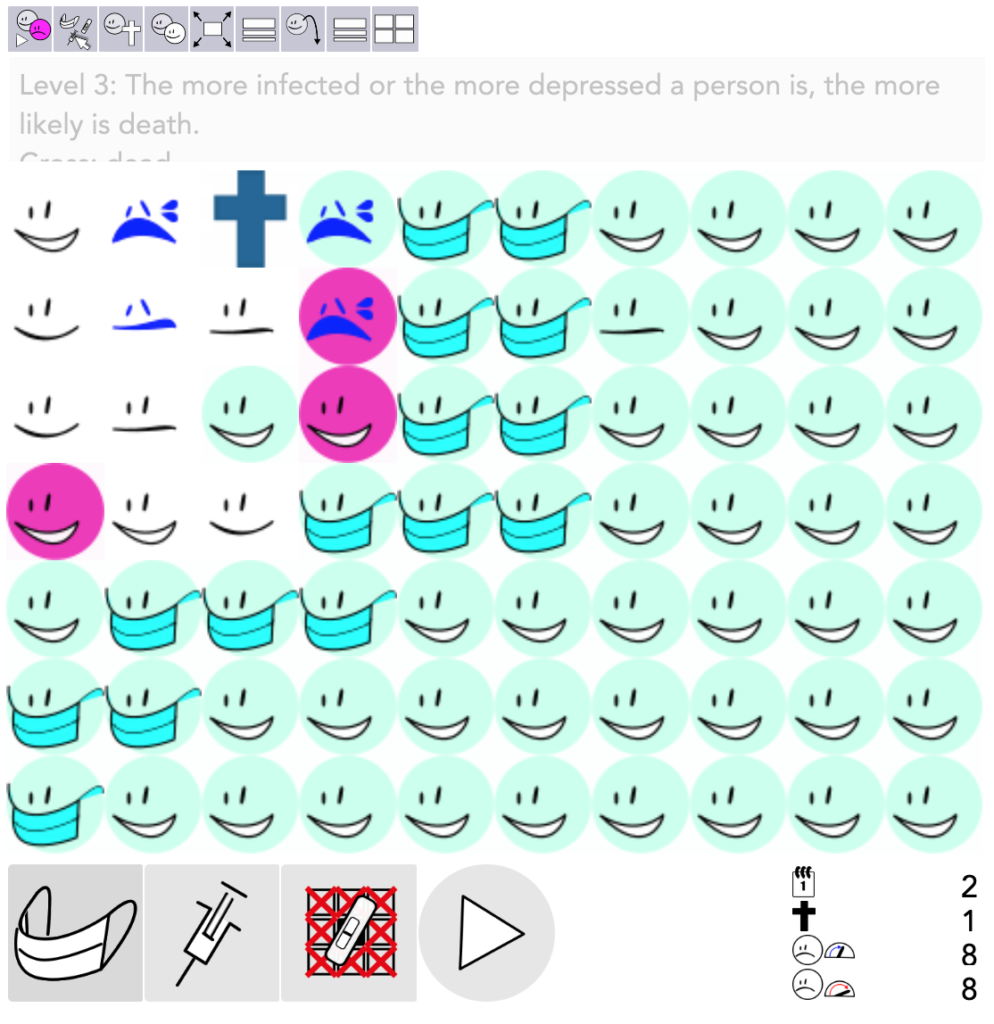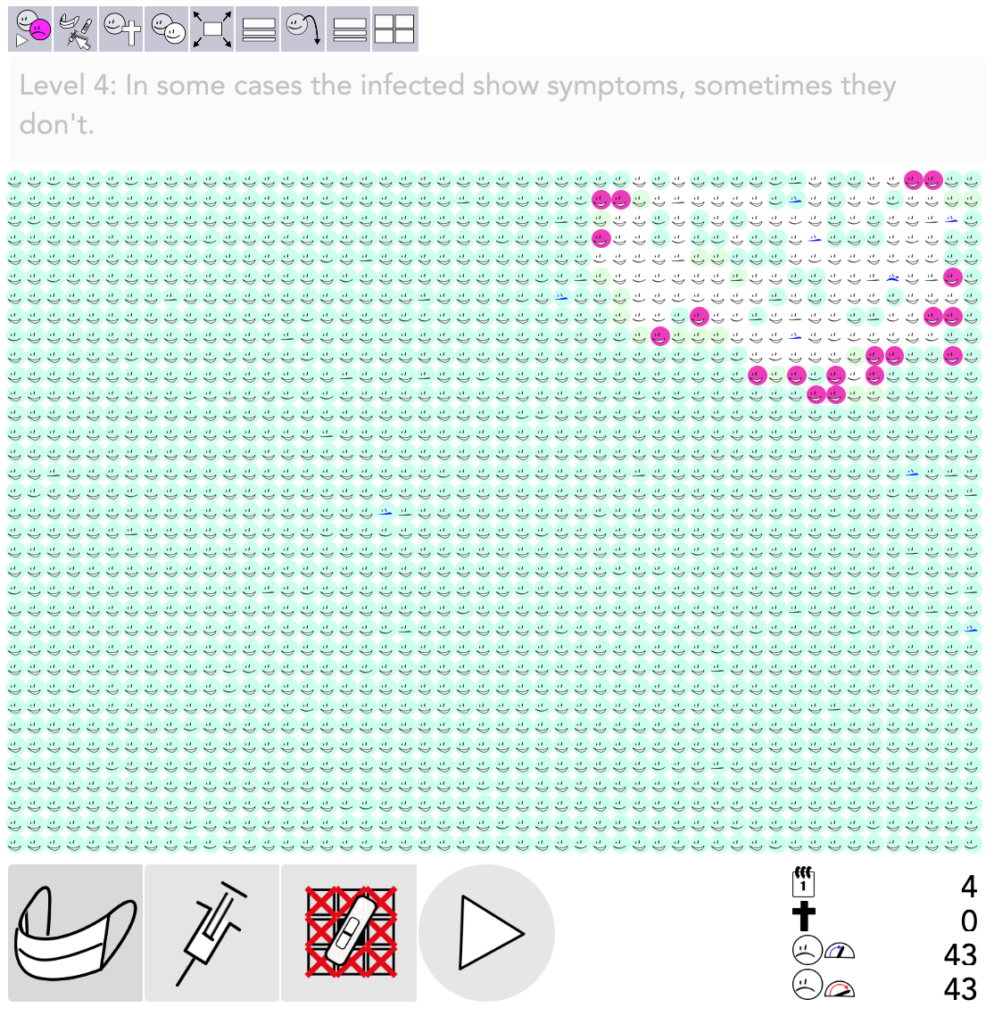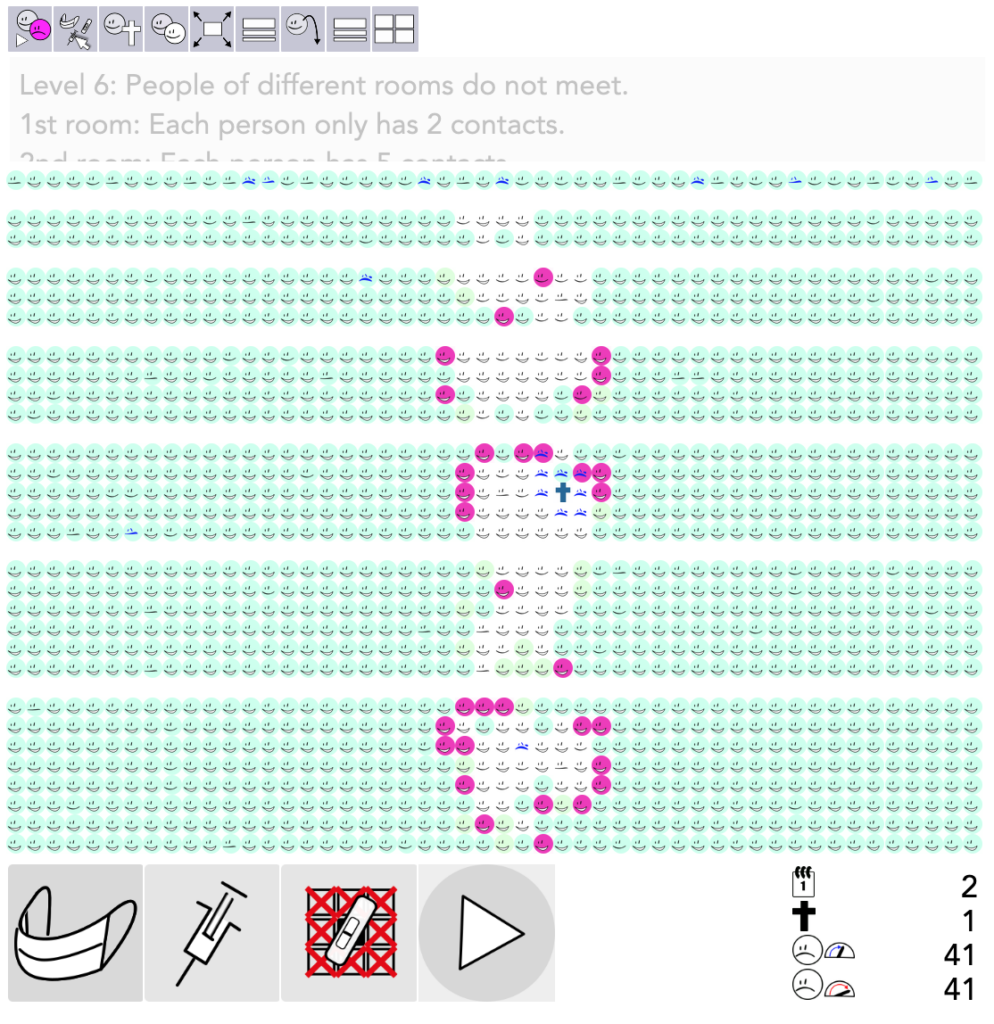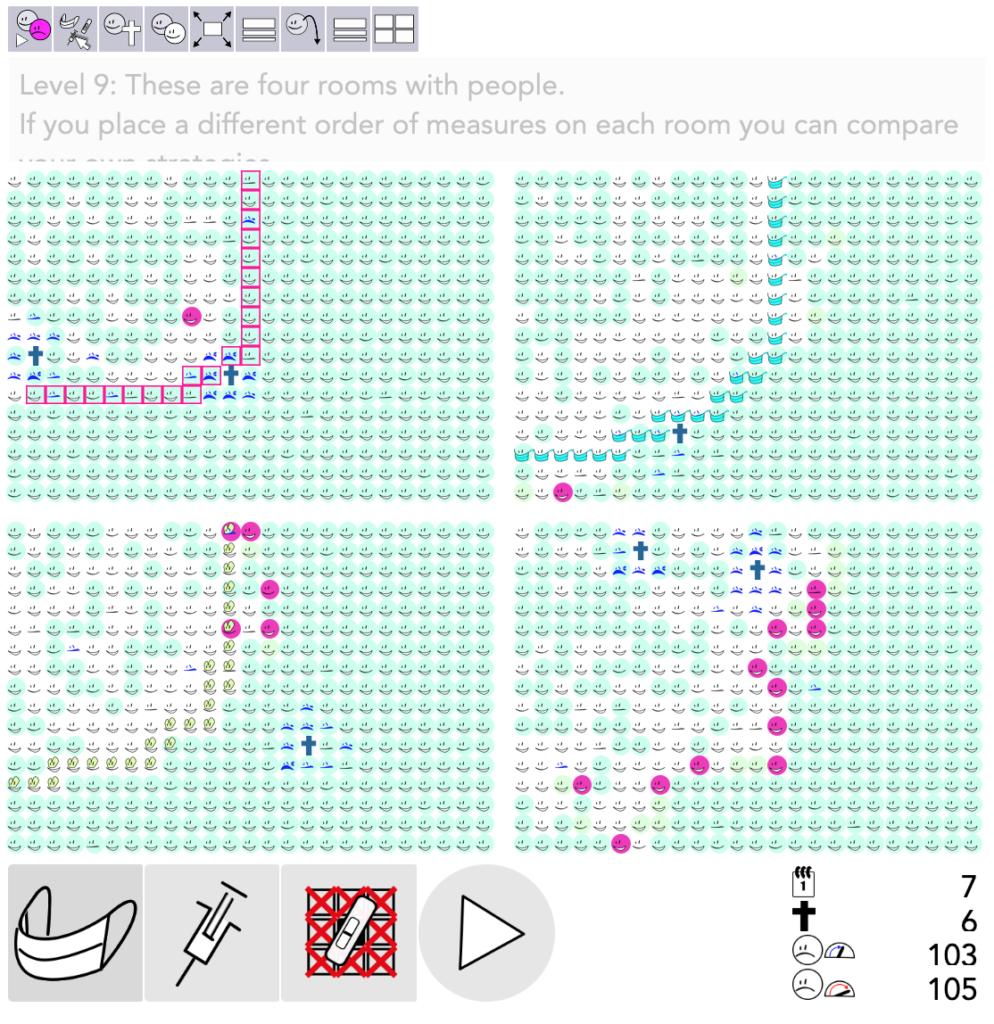Finding a policy for applying epidemic-anti-measures such as masks, vaccines and isolation of people is easier if you can see the outcome of the near and far future.
In the corona epidemic simulation (use Google Chrome to play) infected people are shown in red, non-infected in green, non-infected with antibodys are shown in white. You first choose the people that need to take anti-measures by clicking on them, then click on the mask, vaccine or isolation button down at the bottom. When you hit play the scenario jumps two weeks into the future. On the bottom to the right you can see the number of weeks, the number of deaths, the average unhappiness and the maximum unhappiness during that time.

On the top, you can choose the scenario and the number of people. If you click on the scenario an explanation is shown below and the scenario changes. First, the epidemic spreads only along neighbors, that means that each little guy has at most eight contacts in a week. In the last three scenarios, not only the neighbours can be infected by the epidemic, the epidemic travels (as do people) occasionally.

The last five scenarios include about 1750 people (35×50).

In this scenario people in the top row have a maximum of two contacts per week, in the second row they have five contacts, and in the last rows they have mostly eight contacts.

In case you want to compare the anti-measures to the same number of people choose the last scenario.
Again, if you want to know more about a scenario, click on the scenario an read the explanation below.